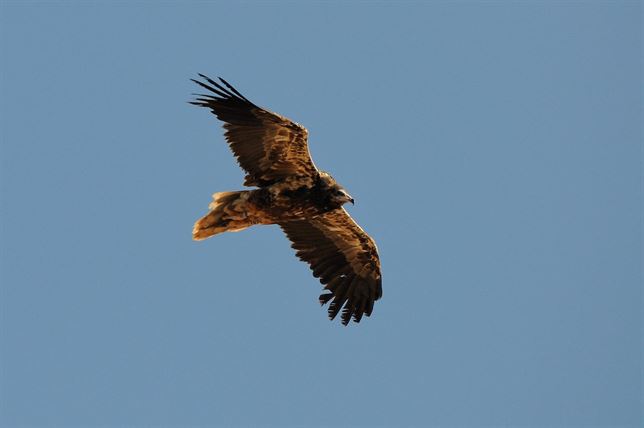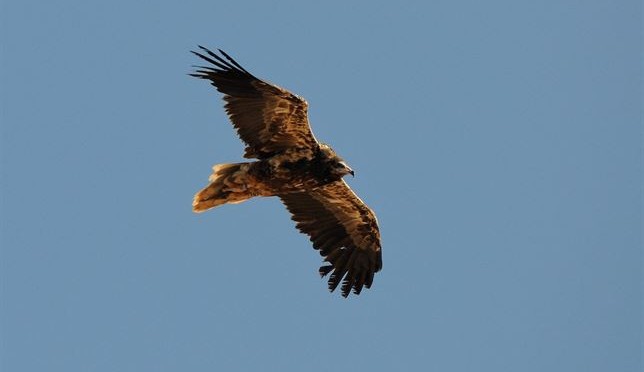The guirre, together with the Houbara, is the most iconic representative of Fuerteventura’s wildlife. This Egyptian vulture used to inhabit historically and regularly several of the Canary Islands, but for different reasons, especially the population and tourist growth, in the last decades it only inhabits Fuerteventura.
Vultures, who arrived in the Canary Islands just 2.500 years ago, following the first aborigines’ herds of goats who arrived in the archipelago, have evolved differently from their continental neighbours, thus becoming an endemic subspecies in themselves, different from any other known species; they are called “majorensis” in honour of Fuerteventura (Maxorata), the only island where this little vulture survives currently.

Named “guirre”, from Guanche origin, it denominates the Canary common vulture (Neophron percnopterus). Fuerteventura is home to the southernmost population in the European Union and the only one belonging to the Canarian subspecies (Neophron percnopterus majorensis). It is the only scavenger bird that inhabits the islands clearing the field of dead animals which is beneficial to man. Although it is basically a migratory bird Fuerteventura can boast of being one of the few places in the world where its population is sedentary.
“El Guirre” is a large bird, almost reaching 1.65 meters wingspan, about 28 inches tall and weighing about 2 kilos. From January it begins to occupy its breeding grounds to lay, usually, two eggs in April, which a couple will incubate for about 42 days. Usually only one chicken survives (the first to be born), which will take about 75 days to take flight and become independent from their parents.
“El Guirre” is a species considered IN DANGER OF EXTINCTION and its preservation is a real challenge.
PROJECT SAVE “EL GUIRRE”
The Ministry of Environment of the Inter-island Council in Fuerteventura has launched an action plan to prevent “El Guirre” from disappearing from the island. The project is structured in two lines: preservation and research.
• The first tries to increase the survival of the species and favour the number of chicks hatching each year. They have prepared several feeders where farmers and staff from Environment place remains of dead animals.
• In parallel a large research project on” El Guirre” is carried out, with the collaboration of Doñana Biological Station (CSIC). With it they want to develop a demographic model that will predict the future evolution of the species, mainly based on their ringing with special marks, census, genetic and habitat studies.
About 15 years ago the populations which inhabited the rest of the islands became extinct, Fuerteventura becoming their last shelter. Currently It’s being recovered in our island after several years of preservation. 2014 has been an excellent year as far as the birth of chickens is concerned, doubling the ones in 2012.
“El guirre” crosses “La Bocaina” to Lanzarote
It has also crossed the Straits of Bocaina we have so often visited on our trips from Corralejo, since in 2013 several specimens were found on the island of Lanzarote and the “Chinijo” archipelago, thus achieving a natural recovery of its former territories and where new couples are coming up.
Currently in Fuerteventura there must be about 250 specimens flying free in our skies and enjoying the aridity of this island sculpted by the wind. It’s not difficult to see these impressive birds in our trips; what is difficult is to avert our gaze from the sea, whose beauty attracts us so much, and look up at the sky; we promise to pay attention so you don’t miss this gift of nature, the flight of “el guirre”, if to join us on our trips from Corralejo to Lobos Island.
FuerteCharter Team
